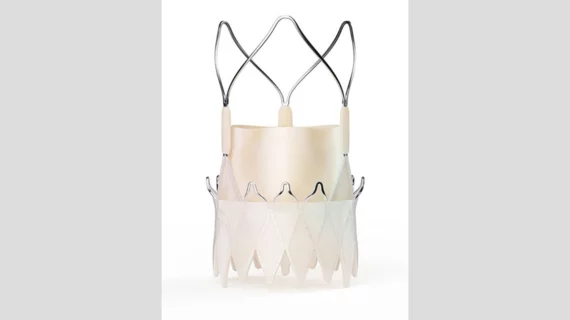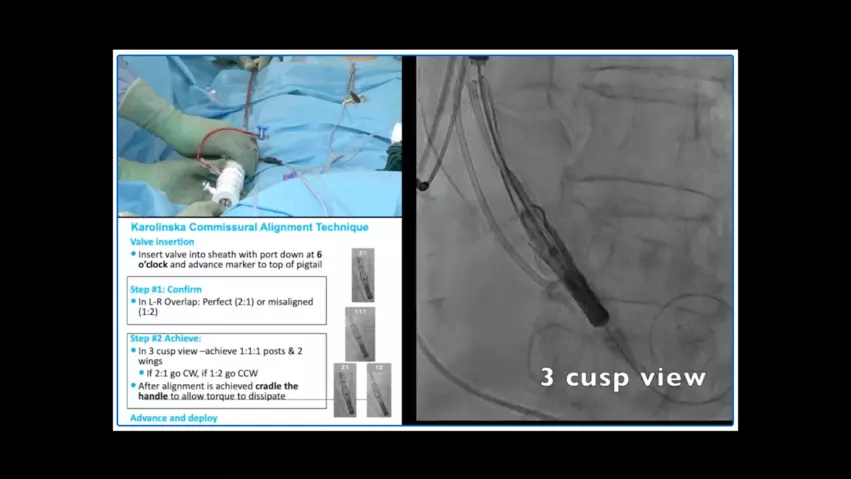ACURATE neo2 valve linked to successful commissural alignment during TAVR
The design of the ACURATE neo2 self-expanding transcatheter heart valve is associated with “highly accurate” commissural alignment during transcatheter aortic valve replacement (TAVR), according to new data published in JACC: Cardiovascular Interventions.[1] The valve, designed and distributed by Boston Scientific, received CE mark approval in 2020, but has not yet approved by the U.S. Food and Drug Administration (FDA) for use in the United States.
Commissural alignment during TAVR is a hot topic among interventional cardiologists and other structural heart disease specialists, in part because TAVR is now being approved for younger patients with longer life expectancies. Commissural alignment can impact the safety and effectiveness of future procedures, including redo TAVR, so ensuring that these younger patients can be treated when necessary in life is a priority for researchers and vendors alike.
“The ACURATE neo2 valve has 3 visible stent posts and free stent struts in line with these posts that allow simplified visualization of the commissural posts,” wrote lead author Christopher U. Meduri, MD, an interventional cardiologist at Karolinska University Hospital in Sweden, and colleagues. “Additionally, ACURATE neo2 is relatively easy to torque, which aids in the ability to rotate it effectively to achieve consistent commissural alignment. The goal of this analysis was to determine the feasibility and success of attempting commissural alignment in an unselected patient population treated with ACURATE neo2.”
Meduri et al. tracked data from 170 TAVR patients treated with the ACURATE neo2 valve at a single facility. When the valve is implanted, operators use two fluoroscopic views—R-L overlap and 3-cusp—to evaluate the unexpanded valve’s orientation. The valve is then rotated as needed until the care team believes alignment has been achieved.
Overall, the group found that this “simple and quick dedicated alignment technique” was linked to strong commissural alignment outcomes. Successful alignment, defined as mild misalignment or no misalignment, was seen in 97% of patients. Moderate misalignment was seen in 1.2% of patients, and severe misalignment was seen in 1.8% of patients. Also, the team added, the technique only took approximately 120 seconds and it was not linked to a higher rate of complications or adverse events.
“In this large evaluation of a commissural alignment technique, alignment was achieved in nearly all patients without safety concerns or impact to procedure duration,” the authors concluded. “Commissural alignment appears effective and safe across all patients with an appropriate technique.”
Read the full study in JACC: Cardiovascular Interventions here. Some of the findings included in this analysis were originally presented at EuroPCR 2022.
Prior coverage of commissural alignment during TAVR procedures performed with Medtronic’s Evolut FX valve is available here.


